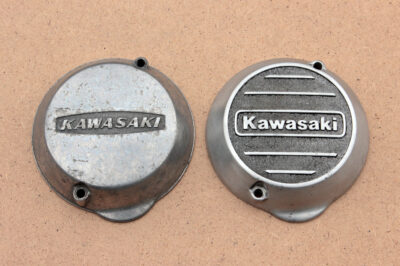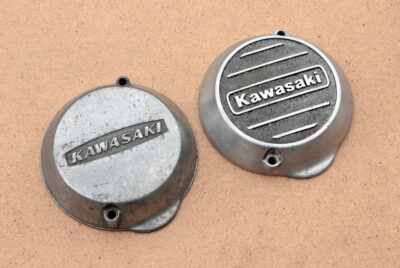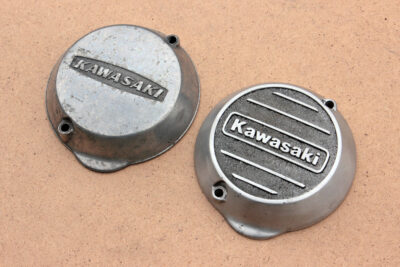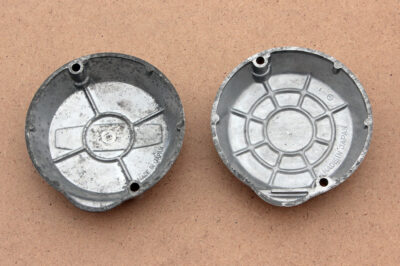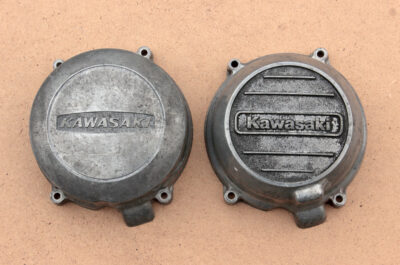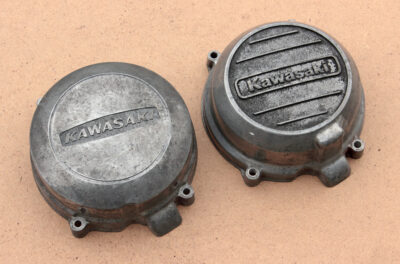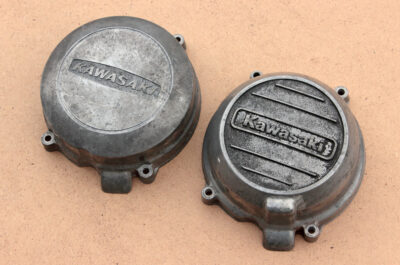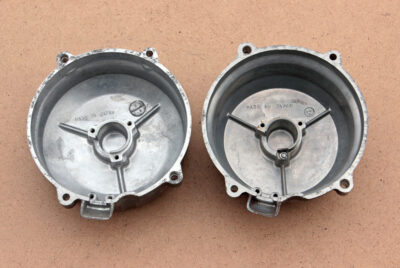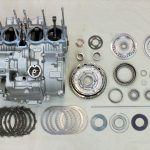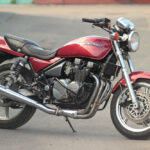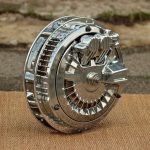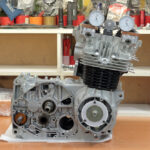It’s amazing how easily simple matters could be turned into complicated. When years ago I bought an engine for Kawasaki KZ650 engine it was equipped with mismatching ignition (later type) and alternator covers (early style for alternator with permanent magnets). And to make things even more interesting, the alternator cover was not an OEM part, but handicraft copy.
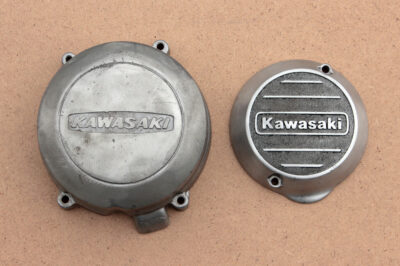
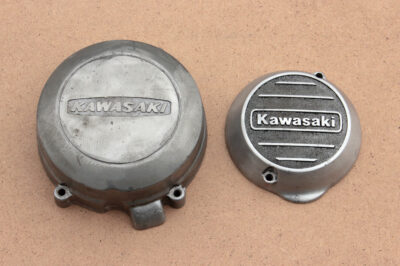 I assumed that such a situation with covers was the result of an attempt of previous owner to resurrect the engine. However, at that time I didn’t give a second thought to this situation.
I assumed that such a situation with covers was the result of an attempt of previous owner to resurrect the engine. However, at that time I didn’t give a second thought to this situation.
When I started KZ650 project I just bought used alternator cover (along with stator) of design similar to ignition cover:
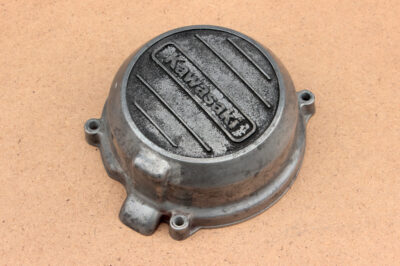
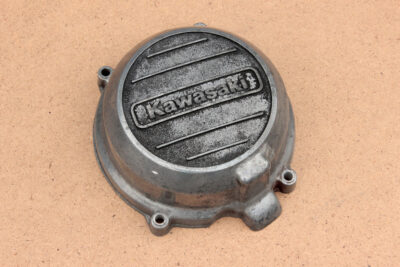 Homemade alternator cover became a gem in the collection of oddities I acquired during the years of working on the motorcycle, like: clutch friction plate which someone equipped with leather for friction material, completely toothless sprockets, brake pads with material for friction pads that looks like only brick could look, and so on, and so forth. And being a real gem, it acquired the place on the wall of my workshop. Working on materials for this article I shot some additional photos of handicraft cover and I will publish them in one of the next posts. However, at the moment let’s return to the covers which I was about to use in the project.
Homemade alternator cover became a gem in the collection of oddities I acquired during the years of working on the motorcycle, like: clutch friction plate which someone equipped with leather for friction material, completely toothless sprockets, brake pads with material for friction pads that looks like only brick could look, and so on, and so forth. And being a real gem, it acquired the place on the wall of my workshop. Working on materials for this article I shot some additional photos of handicraft cover and I will publish them in one of the next posts. However, at the moment let’s return to the covers which I was about to use in the project.
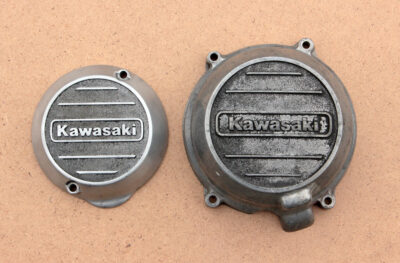
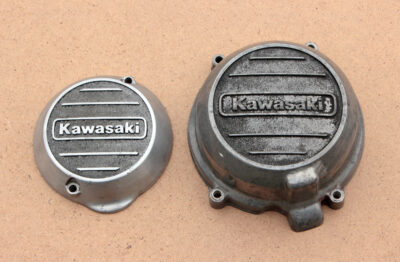
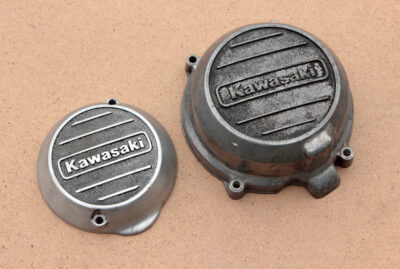 Both of them had something to surprise me. I successfully removed two of three stator screws, but third stuck dead and despite all my effort that screw broke off. Since the stump of that screw protruded from the alternator cover body, the procedure of its extraction was clear: the nut was mounted on the stump and then TIG welded to it. Then the M6 bolt was welded atop of the nut in the same way. The amount of heat applied to the stump during welding was more than sufficient to free it from corrosion deposits. However, the screw just snapped again without further progress of unscrewing.
Both of them had something to surprise me. I successfully removed two of three stator screws, but third stuck dead and despite all my effort that screw broke off. Since the stump of that screw protruded from the alternator cover body, the procedure of its extraction was clear: the nut was mounted on the stump and then TIG welded to it. Then the M6 bolt was welded atop of the nut in the same way. The amount of heat applied to the stump during welding was more than sufficient to free it from corrosion deposits. However, the screw just snapped again without further progress of unscrewing.
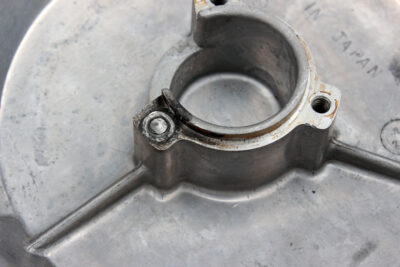
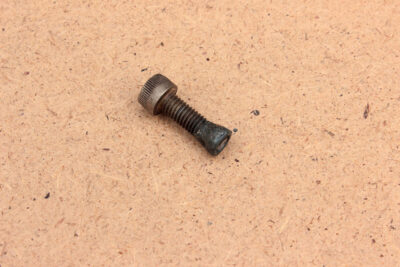
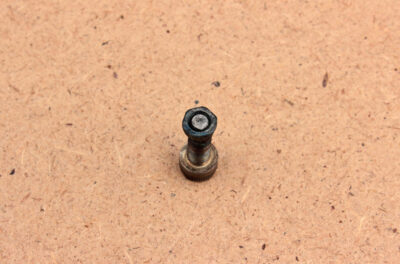 I have few situations like this and in all cases the cause of bolt stuck was the same: aluminum adhered dead to one or two last threads of bolt/screw/stud thread. It forms a kind of boss on the end of the thread so during unscrewing only two results are possible: broken bolt or cracked aluminum. So I was about to drill the remains of screw with 2-3mm drill bit and then to dissolve it with nitric acid, but it turned out that I have not much of a reason to proceed further with this cover since ignition cover revealed ever bigger surprise waiting for me.
I have few situations like this and in all cases the cause of bolt stuck was the same: aluminum adhered dead to one or two last threads of bolt/screw/stud thread. It forms a kind of boss on the end of the thread so during unscrewing only two results are possible: broken bolt or cracked aluminum. So I was about to drill the remains of screw with 2-3mm drill bit and then to dissolve it with nitric acid, but it turned out that I have not much of a reason to proceed further with this cover since ignition cover revealed ever bigger surprise waiting for me.
When I started sandpapering the ignition cover (in course of preparing it for polishing), I noticed what was invisible before: its lower part was covered in grey dots. These dots won’t come off even after intensive sandpapering. After closer investigation I found out that they are deep points of corrosion (it is likely they are chemically caused) and there is no way to get rid of them and get a perfect finish.
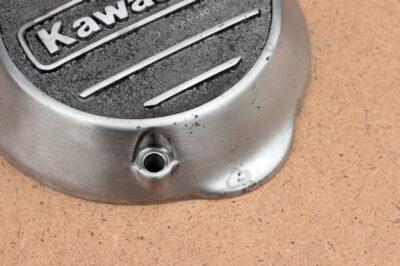
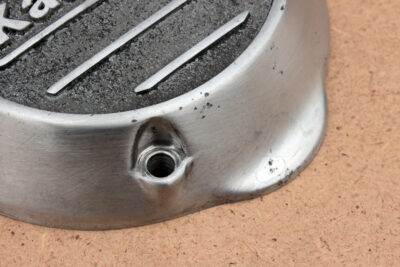 After discovering this issue I suddenly realized that I have no desire to buy another ignition cover of the later type. What I really wanted was a couple of covers of early type with the KAWASAKI logo written in capital letters with an S letter that looks to be more tilt than other letters. It’s, by the way, my favorite type of Kawasaki logo.
After discovering this issue I suddenly realized that I have no desire to buy another ignition cover of the later type. What I really wanted was a couple of covers of early type with the KAWASAKI logo written in capital letters with an S letter that looks to be more tilt than other letters. It’s, by the way, my favorite type of Kawasaki logo.
So I hunted down both, ignition and alternator covers with aforementioned logos. Ignition cover I found on United Kingdom Ebay:
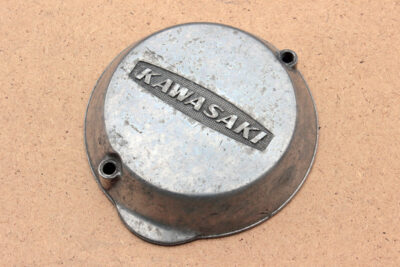
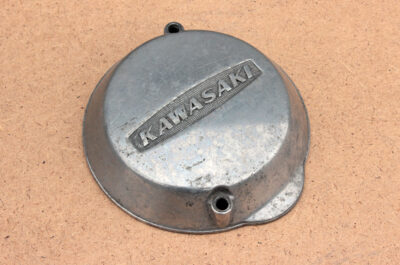
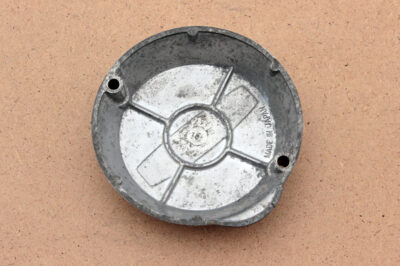
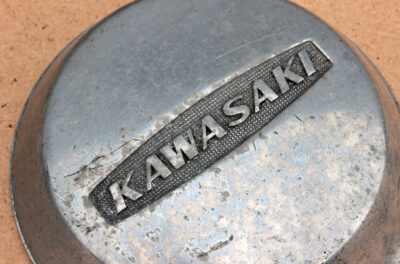 Alternator cover (compatible with three-phase constant magnet alternator) came from the USA.
Alternator cover (compatible with three-phase constant magnet alternator) came from the USA.
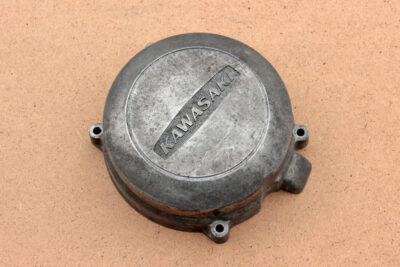
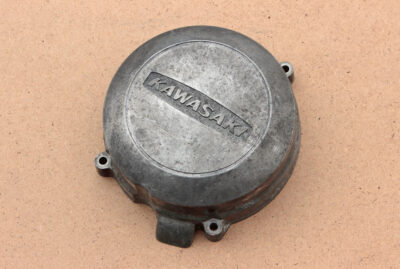
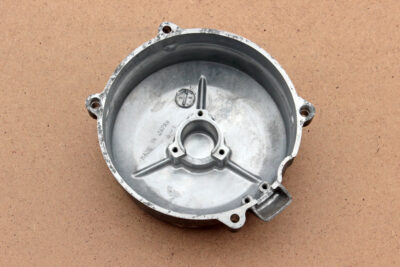 They don’t look great as they are, but I found no flaws I couldn’t manage. So to get them nice and shiny is just a matter of applying some knowledge and effort. I already like the look of the pair of them, and I wish I could work on them right now but alas, I still have a lot of work to do before I could return to our own project.
They don’t look great as they are, but I found no flaws I couldn’t manage. So to get them nice and shiny is just a matter of applying some knowledge and effort. I already like the look of the pair of them, and I wish I could work on them right now but alas, I still have a lot of work to do before I could return to our own project.
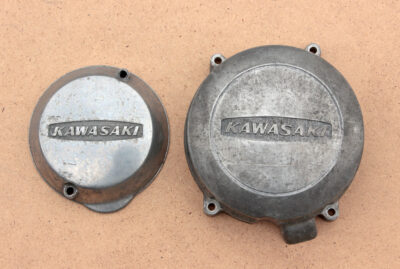
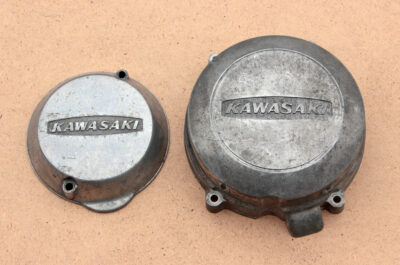
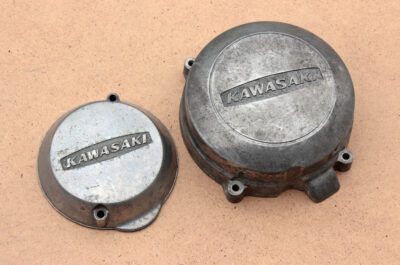 And to finish this part of KZ650 story here are some photos of older and newer covers in comparison by pairs:
And to finish this part of KZ650 story here are some photos of older and newer covers in comparison by pairs:

